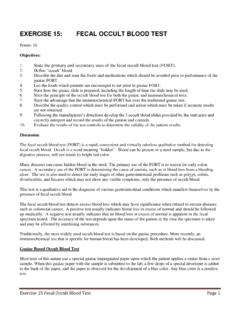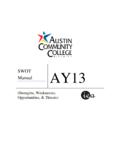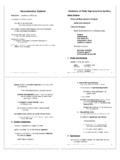Transcription of Microscope Use and Care 2010 - Austin Community College ...
1 Microscope Use and Care 1. Use the scope at your station. If that scope is unavailable, inform your instructor. 2. Be very careful when removing the scope from the cabinet. 3. Always grip the Microscope by the arm and put your hand beneath its base. Hold the scope upright at all times. Do not bump it against anything. 4. Before you use the scope, check it to be sure it was put away properly by previous users. 5. ONLY the 100X (oil immersion) objective uses oil. If you must return to a lower magnification to refocus, remove the oil from the slide first. DO NOT get oil on any of the other objectives; the oil will ruin them, and you will not be able to focus at those powers. This will render the scope inoperable, as that is irreparable damage. 6. Large specimens, like the whole mount adult platyhelminthes, trematodes and cestodes that you will examine at the end of the semester, should be examined at low power only.
2 They are too big to magnify further, and efforts to do so will break the slide and can break the objective. You will be held accountable for the condition of the Microscope after you use it. If you find a scope that was not put away properly, please report it to your instructor. When you put the scope away, remember to: Remove the slide and return it to its proper place. Clean any oil off the 100X objective. Be sure the other objectives are clean. Turn off the light. Loop the cord up on itself , secure it with the Velcro tie, and let it dangle freely. Replace the cover. Return the scope to its cabinet with the oculars facing the back of the cabinet. If you have questions, ask your instructor or the lab technician. oculars Rules for Microscope Use: 1. Carry the Microscope properly. 2. Always begin focusing with the 4X objective.
3 3. Use the coarse focus only with the 4X objective in place. 4. Use immersion oil only with the 100X objective (oil immersion lens) in place. 5. Use only ONE drop of oil. 6. Lower the stage and then remove the slide when you are done. 7. ALWAYS clean the Microscope when you are done. Use a Kimwipe or lens paper and the alcohol in the labeled jars. 8. Always place the 4X objective over the stage and be sure the stage is at its lowest position before putting the Microscope away. 9. Always turn off the light before putting the Microscope away. 10. Always wrap the cord correctly before putting the Microscope away. 11. Always return the Microscope to the correct cabinet. 12. Always place the oculars toward the BACK of the cabinet. base revolving nosepiece slide holder objectives mechanical stage arm light stage aperture coarse focus fine focus mechanical stage controls light intensity adjustment condenser diaphragm lever Parts of the Microscope














